Most villages in the Himalaya mountains are in valleys. Valleys have little streams, some places to grow food, and they’re safe from the super cold winds that blow through the mountains in winter. The houses are usually built with big rocks and have slanted roofs made of stone, so the heavy rain can slide right off. When it’s sunny in the fall, you’ll often see pumpkins on the roofs, getting all nice and ripe in the sun.
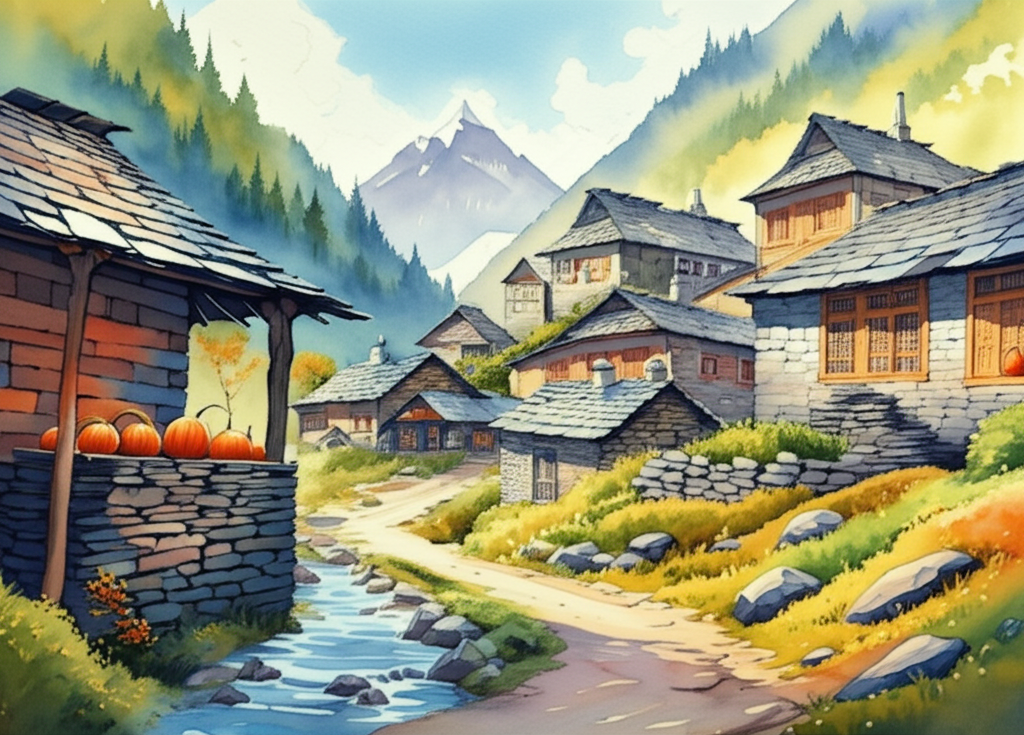
One night in October, I was sleeping over at my friend’s house in a village. I woke up because I heard a rumbling and bumping noise on the roof. I poked my friend and asked, “What’s going on?”
“It’s just a bear,” he said.
“Is it trying to get inside?”
“Nope. It wants the pumpkins!”
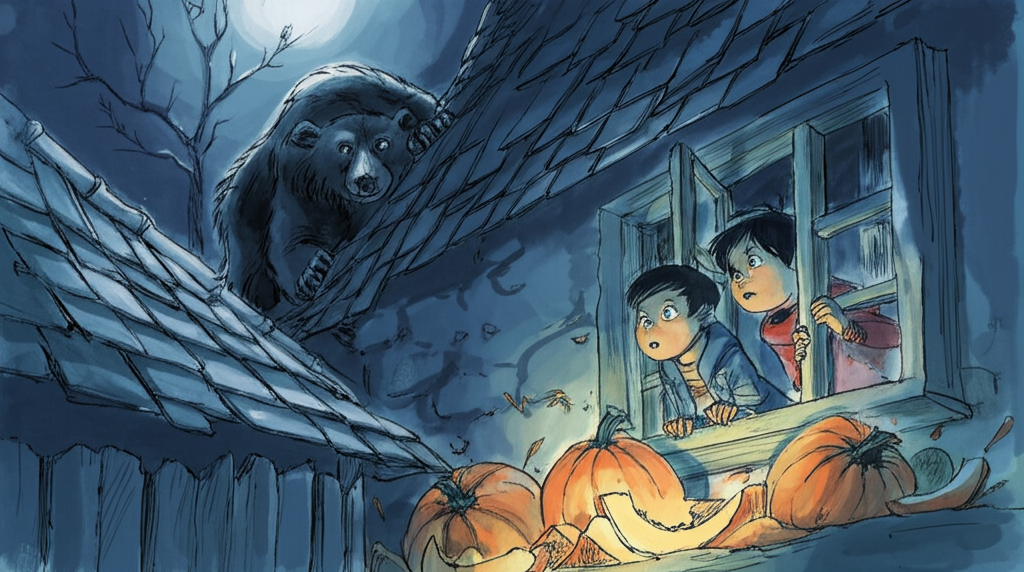
A little later, we peeked out the window. We saw a big black bear running through a field, leaving a trail of half-eaten pumpkins behind.
In the winter, when snow covers the high mountains, the Himalayan bears come down lower to find food. Sometimes they look for food in fields. They can’t see very well, and they’re scared of anything that moves, so they can be a little dangerous. But like most wild animals, they try to stay away from people.
The villagers always tell me to run downhill if a bear chases me. They say bears can run uphill easier than downhill. I haven’t been chased by a bear yet, and I’m okay with that! But I’ve seen some of these mountain bears in India, and they’re always really cool to watch.
Himalayan bears love pumpkins, corn, plums, and apricots. Once, I was sitting in an oak tree, hoping to see some pine martens that lived nearby. I heard a whiny grumble, and then a little bear walked into the open space under the tree.
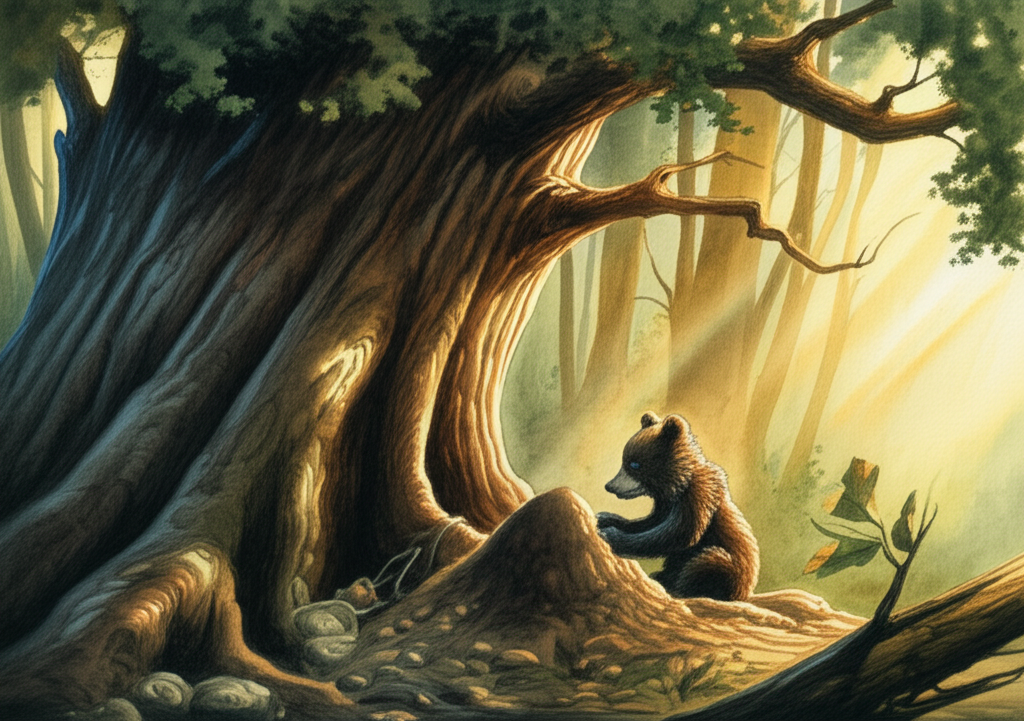
He was just a cub, so I wasn’t worried. I stayed very still and watched what he would do.
He put his nose on the ground and sniffed around until he found a big ant hill. He started huffing and puffing, blowing air in and out of his nose really fast. The dust from the anthill flew everywhere! But the anthill was empty, so the bear grumbled and climbed up a plum tree. Soon he was way up in the branches. That’s when he saw me.
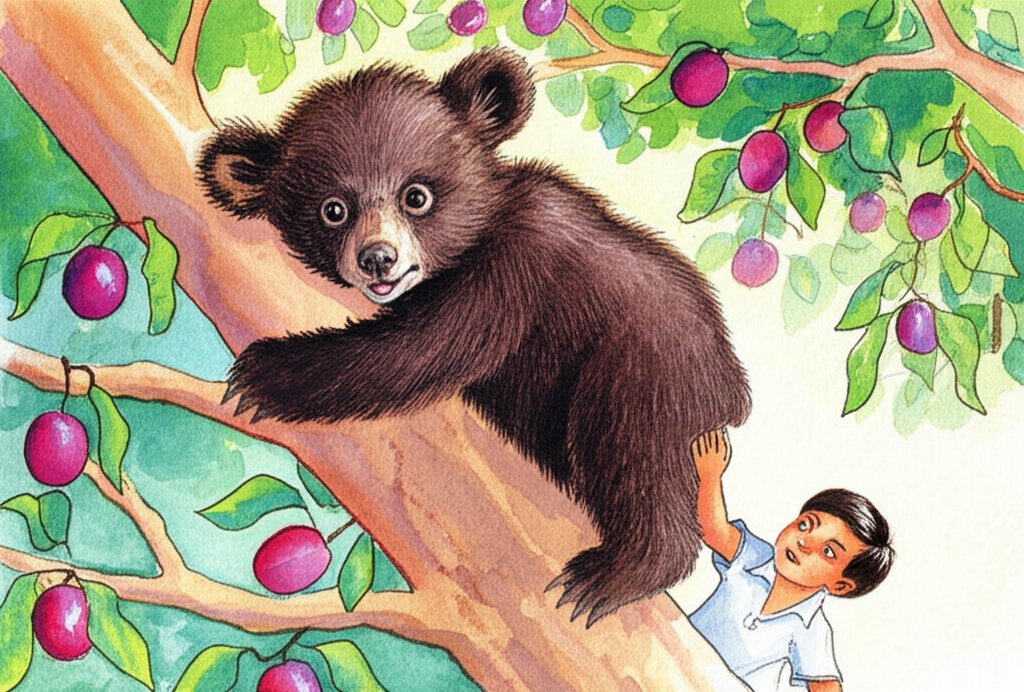
The bear quickly scrambled higher up the tree and laid flat on a branch. The branch wasn’t very big, so a lot of the bear was hanging off the sides. He tucked his head behind another branch. He couldn’t see me anymore, so he thought he was hidden, even though he was still grumbling.
Like all bears, this one was super curious. So, slowly, little by little, his black nose peeked over the edge of the branch. As soon as he saw me, he pulled his head back and hid his face.
He did this a few times. I waited until he wasn’t looking, then I moved down the tree a little bit. When the bear looked over and saw that I was gone, he was so happy that he stretched all the way to another branch and grabbed a plum! I couldn’t help but laugh.
The startled young bear fell out of the tree! He dropped through the branches for about fifteen feet and landed with a thump in a pile of dry leaves. He wasn’t hurt, but he ran away from the clearing, grunting and squealing the whole time.
Another time, my friend Prem told me that a bear was messing around in his cornfield. We stayed up all night in an old barn, where we could see the field in the moonlight.
A little after midnight, a mother bear came to the edge of the field. She seemed to think someone was there. But she was hungry! So, she stood on her back legs and looked around to make sure the field was empty. Then she carefully walked out of the forest.
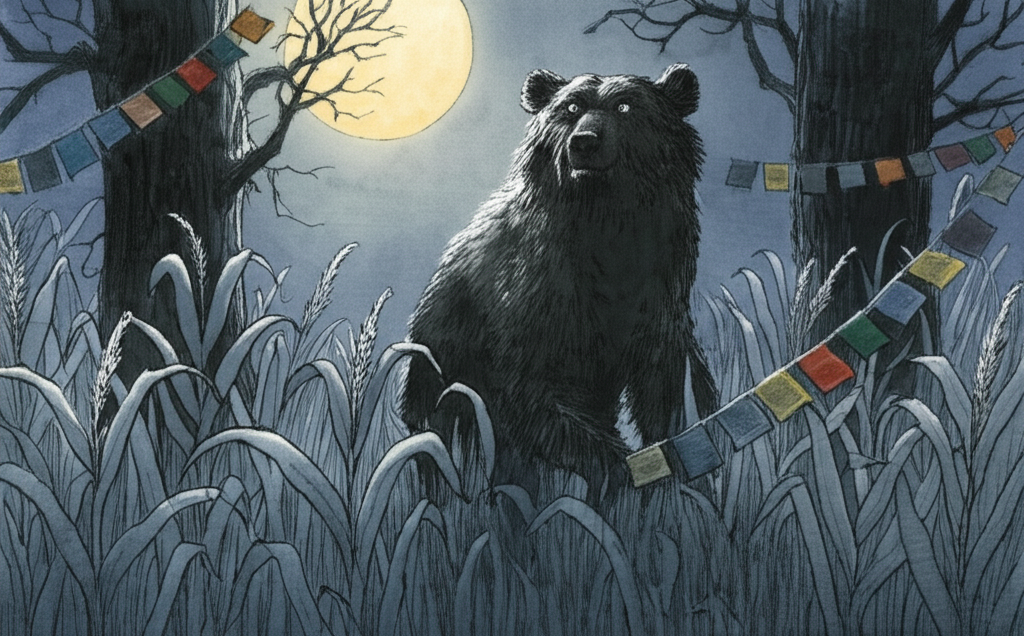
Something shiny caught her eye! It was some Tibetan prayer flags hanging between two trees. She grunted like she didn’t like them and started to back away. But the flags fluttering in the wind were a puzzle she wanted to figure out. So she stopped and watched them.
The bear walked up to the flags and looked at them from different angles. Then, she realized they weren’t dangerous, so she went right up to them and pulled them down! She grunted like she was happy and walked into the cornfield.
Prem didn’t want to lose any more corn, so he started shouting! His kids woke up and ran out of the house, banging on empty cans.
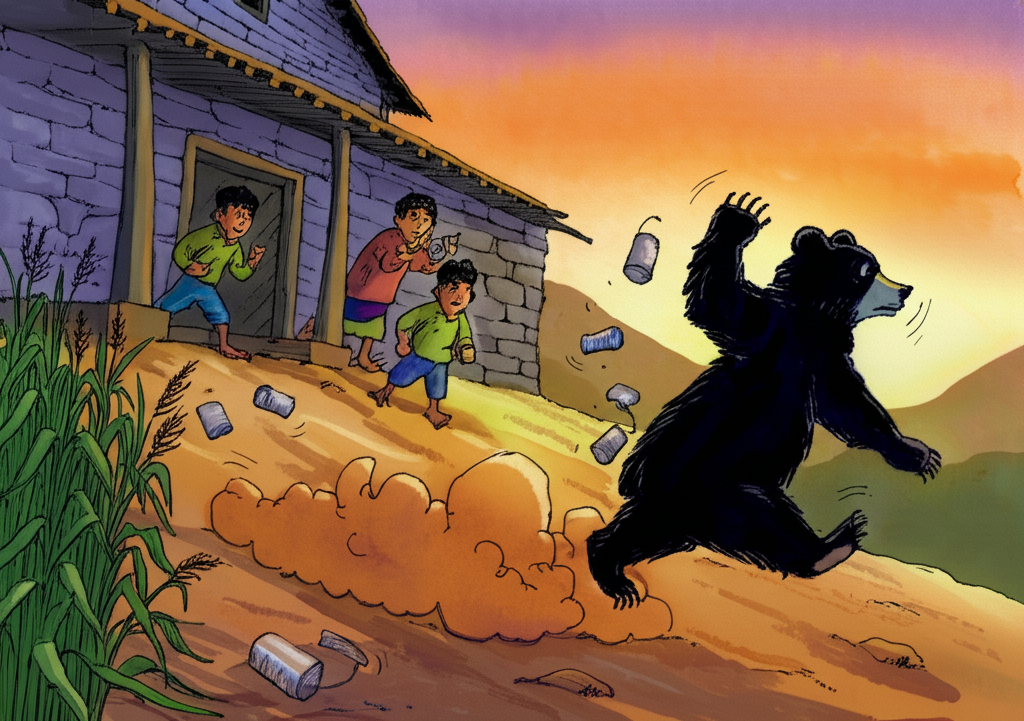
The bear didn’t get her dinner, so she stomped off in a bad mood. She ran downhill really fast, and I was glad I wasn’t in her way!
Uphill or downhill, it’s always best to give an angry bear lots of space!